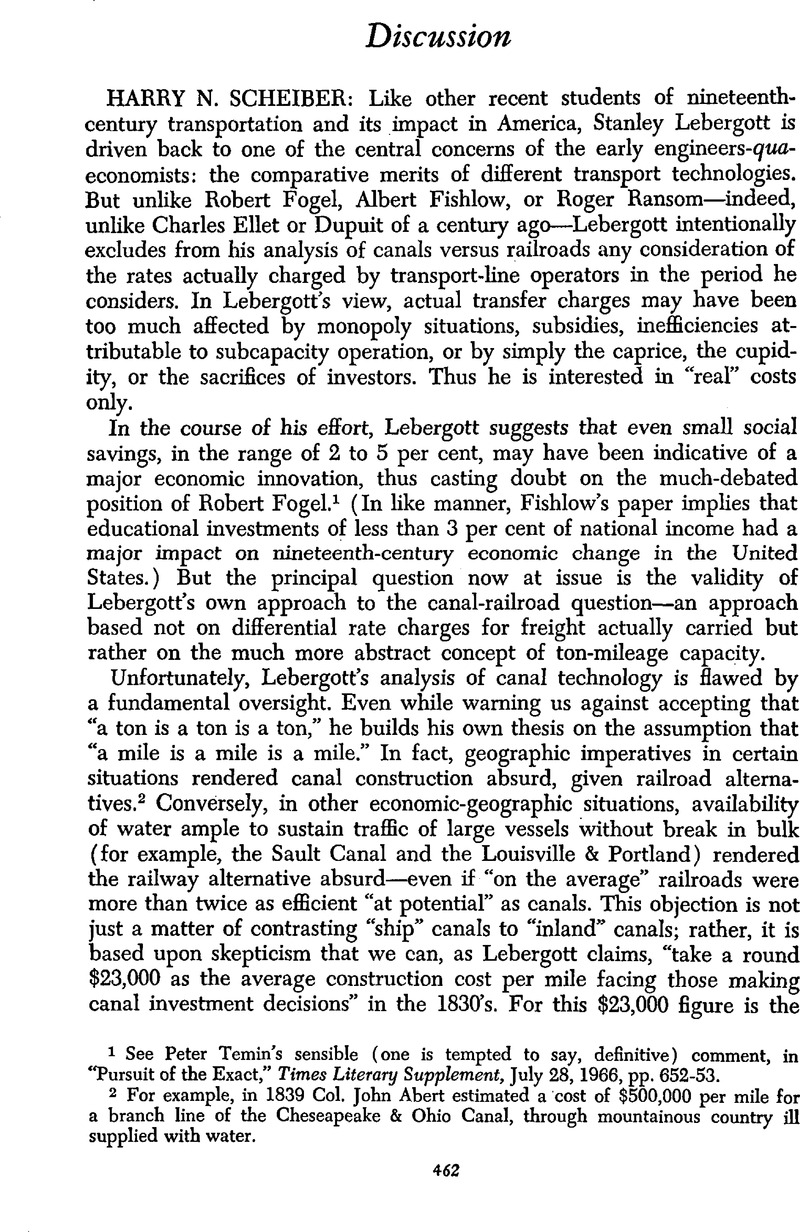Article contents
Discussion of papers by Albert Fishlow and Stanley Lebergott
Published online by Cambridge University Press: 03 February 2011
Abstract

- Type
- Discussion
- Information
- Copyright
- Copyright © The Economic History Association 1966
References
1 See Temin's, Peter sensible (one is tempted to say, definitive) comment, in “Pursuit of the Exact,” Times Literary Supplement, 07 28, 1966, pp. 652–53.Google Scholar
2 For example, in 1839 Col. John Abert estimated a cost of $500,000 per mile for a branch line of the Cheseapeake & Ohio Canal, through mountainous country ill supplied with water.
3 That is, a quantity of water equal to the lock's volume less displacement by the boat(s) passed through. Other factors important to determination of a canal's water needs were evaporation and leakage through the least efficient lock. Abert estimated that 90 per cent of the volume of prism would be lost monthly by filtration and evaporation; the Erie Canal's loss was estimated at five times that amount (American Railway Journal, n.s., II [1839], 74–75, 104).Google Scholar
4 In oral discussion, Lebergott emphasized that the Erie Canal did in fact carry 60-ton boats. This is irrelevant to the question whether all the canals in Cranmer's sample could have done so.
5 Shaw, Ronald, Erie Water West (Lexington: University of Kentucky, 1966) p. 236.Google Scholar
6 On the Pennsylvania Mainline, tandems of three mules hauled boats sixteen miles, or about six hours of work daily.
7 Though Lebergott makes no allowances for outages on account of accident, water failure, etc. at that point in his analysis, elsewhere he reduces by 50 per cent his estimate of canal capacity traffic at potential to discount outages.
8 Indeed, data cited in the text of the appendix, on average speed of canal boats, support this contention.
9 In Journal of the Franklin Inst., n.s., XVI (1840), 297.Google Scholar
10 Not even the average gradient of line, nor the proportion that was double track, is specified.
11 Data in the text of Lebergott's paper suggest that a 100-ton load for a single locomotive would have been closer to capacity than the 200-ton estimate.
12 Watkin, Edward, A Trip to the United States and Canada (London, 1852), pp. 120–22Google Scholar . Watkin observed further that U. S. railways were permitted grade crossings (“a mere opening across the line, destitute of even a gate, and with not a soul to watch it”) instead of bridges, even in the heart of urban centers. He might have added that fencing requirements were generous in most states.
13 Cf. Birch, A. H., Federalism, Finance, and Social Legislation in Canada, Australia, and the United States (Oxford: Clarendon Press, 1955).Google Scholar
- 1
- Cited by


